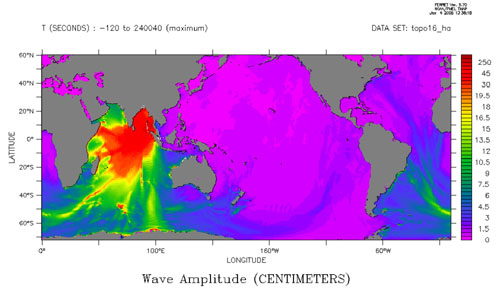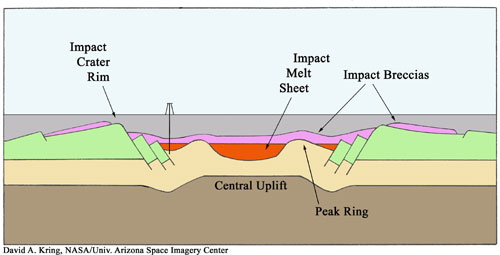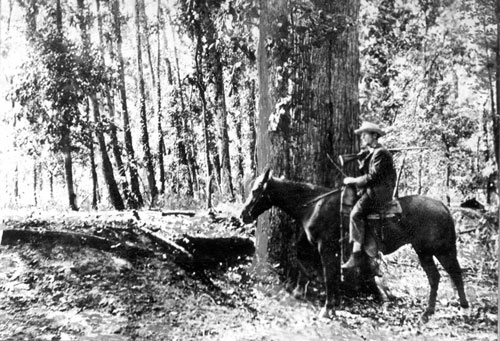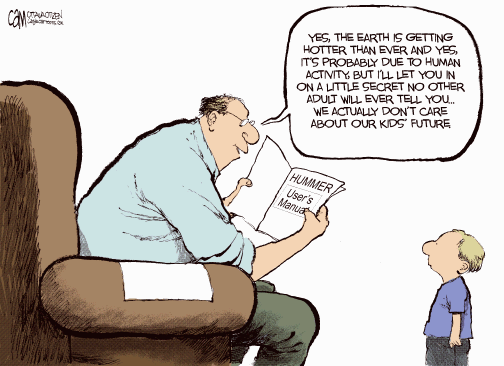The Learning Environment
EARTH 501 will be conducted entirely on the World Wide Web. There are no set class meeting times, but you will be required to complete weekly assignments. Registered students in this course will need to navigate between several environments in the World Wide Web. These include:
This Web Site
The instructional materials in this site consist of 6 lessons, each including multiple pages of text, graphics, and activities. Activities prompt readers to explore selected Web sites, to download data and/or software, or other adventures. This web site is part of the Open Educational Resources initiative of Penn State's College of Earth and Mineral Sciences and access to it is unrestricted.
Canvas
Canvas is a secure course management system used at Penn State. In Canvas, registered students submit assignments, receive feedback from me, take online quizzes, check assignment scores and course grades -- basically everything that involves the security that PSU's lawyers insist upon which is mainly anything graded, anything with a copyright, anything that identifies you as a student in this course.

Students who register for this Penn State course gain access to assignments and instructor feedback, and earn academic credit. Only students who are registered for this course will have access to the Canvas space for this course. Information about this course and the online Masters of Education in Earth Sciences.
Penn State's library site
You will use your PSU credentials to access the articles I have put in e-reserves for this course. A link to the library is in the Resources drop-down menu in this website. You can also get to the library's main page directly.
Topics of study
There are 5 content lessons that will be completed at a rate of approximately 2 or 3 weeks per lesson. Lesson learning activities will be in the form of background reading and discussion that outlines a current scientific problem or debate, the collection and manipulation of appropriate data, and the assessment of the results of this work. By doing this, you will simultaneously become familiar with the content as well as the practice of science. You will also participate in online discussions about how to teach this content to specific secondary school audiences. Following the 5 lessons, you will complete a capstone project (Lesson 6) in which you will construct a teaching plan based on the topic of your choice.
Lesson 1 - Content PreInstructional Activities
The main priorities in Lesson 1 are to learn a bit more about you and your background in Earth Science, to make sure we are all comfortable creating plots electronically (which you will need to do for some of the subsequent course assignments), and to discuss a couple of short articles together as a group.
Lesson 2 - "Does the Atlantic Ocean require a tsunami warning system?"
The figure below, from NOAA's Pacific Marine Environmental Laboratory, shows global maximum wave amplitudes from the tsunami caused by the great 26 December 2004 Sumatra-Andaman earthquake. In Lesson 2 we will analyze tide gauge records from this event.
The results of this analysis will inform our subsequent discussion of the potential for tsunami risk in the Atlantic Ocean. Finally, we will determine the advantages and disadvantages of developing a tsunami warning system in the Atlantic Ocean.

Lesson 3 - "How to kill a dinosaur: Consensus in the craters?"
The figure below shows a simplified geologic cross-section of an impact crater in Chicxulub, Mexico. This crater is thought by most scientists to be the impact crater resulting from the asteroid collision that caused the mass extinction event at the end of the Mesozoic era about 65 million years ago. In this lesson, we will discuss prevailing hypotheses for this and other mass extinction events during Earth's history. We will also discuss the effect on evolution/diversification of life following mass extinction events.

Archived by WebCite®
Lesson 4 - "Is the New Madrid Seismic Zone at risk for a large earthquake?"
The photo below, taken in 1904, shows damage from the sequence of New Madrid, MO, earthquakes that occurred in 1811-12. You can see one side of fault trench or "fissure" near the banks of St. Francis River, Clay County, Arkansas. In this lesson, we will learn about the 1811-12 earthquake sequence and discuss the controversy regarding the extent of seismic risk in the central United States today. We will learn how to estimate earthquake recurrence interval using a variety of methods.

Lesson 5 - "Recent climate change: Why did it take so long to convince?"
In this lesson, we will investigate a combination of several different datasets and models in order to analyze the extent to which global climate is affected by human activity. We will discuss the short and long term consequences of global warming and try to quantify the uncertainties inherent in scientific measurements.

Course assignments
EARTH 501 will rely upon a variety of methods to assess and evaluate student learning, including
Required participation in on-line discussion forums
to provide opportunities for me to gauge your progress and ability to articulate key concepts. I will assign weekly readings and ask you to discuss and debate the significance of these readings within the larger framework of the topic of the current lesson. The discussions will also be a venue for you to get help or give help when performing the data analyses.
Data analyses and write-ups
that require you to collect and interpret datasets.
A capstone project
that will be used to evaluate your knowledge and skills through the production of a learning module that you, in turn, will be able to use to teach course concepts to your own students.